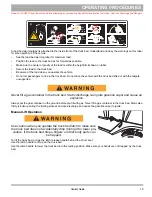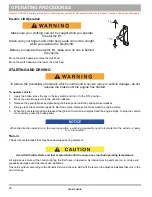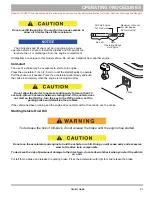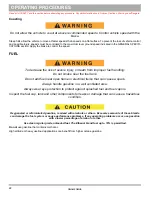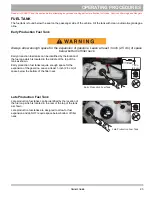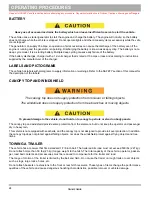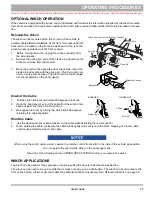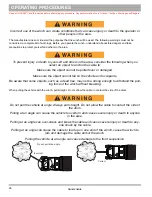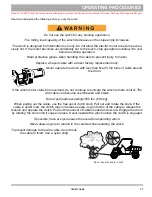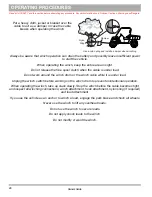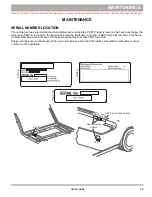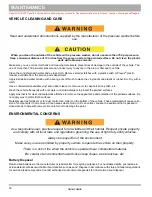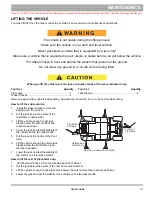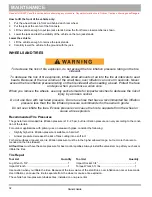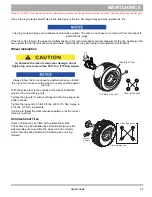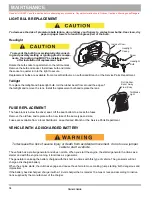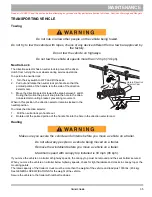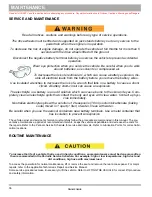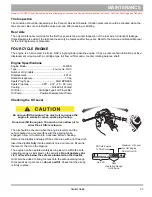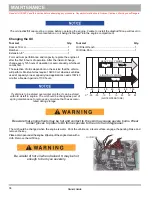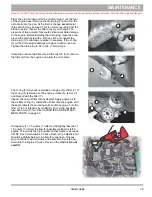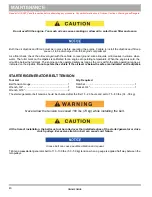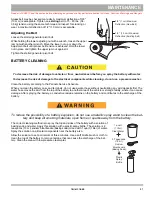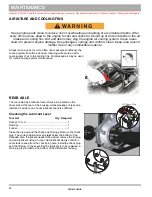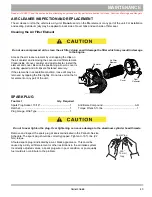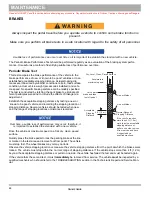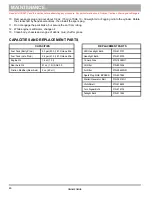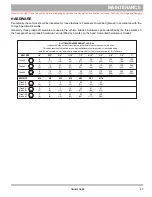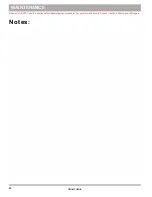
B
MAINTENANCE
Read all of SAFETY and this section before attempting any procedure. Pay particular attention to Notices, Cautions, Warnings and Dangers.
33
Owner’s Guide
Use a tire plug to repair small holes in the tread part of the tire. For large holes and cuts, replace the tire.
Tire plug tools and plugs are available at automotive outlets. The tires do not have to be removed from the wheel to
install the tire plugs.
If the tire is flat, remove the wheel and inflate the tire to the recommended maximum pressure for the tire. Submerge the
tire in water to find the leak and mark with chalk. Install the tire plug according to manufacturers instructions.
Wheel Installation
To decrease the risk of component damage, do not
tighten lug nuts to more than 85 ft. lbs. (115 Nm) torque.
Always follow the cross-sequence pattern when you install
the lug nuts to make sure the wheel is evenly seated against
the hub.
With the valve stem to the outside of the wheel, install the
wheel on the hub with lug nuts.
Tighten the lug nuts (1) with your fingers in the cross-sequence
pattern shown.
Tighten the lug nuts to 50 to 85 ft. lbs. (68 to 115 Nm) torque in
20 ft. lbs. (27 Nm) increments.
Continue to follow the cross-sequence pattern until the correct
torque is reached.
Unidirectional Tires
Some vehicles may be fitted with unidirectional tires.
These tires may be identified by a directional arrow on the
sidewall. Be sure to position the wheel on hub correctly
with arrow indicating direction of rotation when moving
forward.
Valve Stem Cap
Cross Sequence
Tire style may vary
Tire style may vary
1
2
3
4
Cross Sequence
Front of
Vehicle
Rota
tio
n

